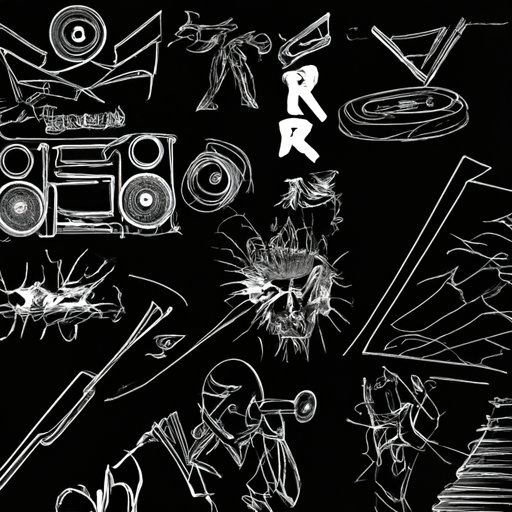I. Introduction
Phonk is a genre-bending sound that has been gaining popularity in recent years. Although it is a relatively new genre, it has already gained a significant following within the underground music scene. This article aims to dive deep into this unique sound and explore its history, characteristics, influences, and why it is dominating the underground music scene.
II. Discovering Phonk: The History and Evolution of this Genre-Bending Sound
Phonk has its roots in the chopped and screwed remixes of Southern rap in the 1990s and early 2000s. DJs chopped and screwed popular hip-hop tracks by slowing them down, giving them a darker and more ominous vibe. Phonk emerged as a sub-genre of this practice, as producers began to incorporate funk and soul samples into the chopped and screwed sound.
Phonk began to develop as a standalone genre in the early 2010s when SoundCloud became a popular place for music sharing. Key players in the emergence of Phonk included DJ Smokey, Soudiere, and DJ Yung Vamp. They took the chopped and screwed sound and infused it with funk and soul samples, creating a unique vibe that appealed to fans of both hip hop and funk music.
III. The Basics of Phonk: A Guide to Understanding Its Distinctive Style
Phonk is characterized by its slow, heavy beats, often with heavy basslines and dark, ominous samples. It incorporates elements of both hip hop and funk music, with soulful, ’70s-inspired samples often chopped and screwed to blend into the beat. Vocals are often distorted, sometimes even pitched down, to create a haunting effect.
Production techniques in Phonk typically involve the use of analog hardware, such as the SP-404 sampler or Roland SP-303, which gives the sound a vintage, gritty feel. Many Phonk producers also use tape saturation and other effects to create a warm, vintage aesthetic.
Some examples of popular Phonk tracks include “Sippin on Some Syrup” by Three 6 Mafia, “Mudd Walk” by DJ Smokey, and “Red Lean” by Soudiere.
IV. Exploring the Fusion of Hip Hop and Funk: An In-Depth Look at Phonk
Phonk is often described as a fusion genre, blending elements of hip hop and funk music. Both genres have a shared history, with funk being a significant influence on the development of hip hop in the ’70s and ’80s. Phonk takes this relationship between the two genres to the next level, combining classic funk samples with hip hop production techniques.
The result is a sound that pushes the boundaries of both genres, challenging traditional definitions of what hip hop and funk should sound like. Phonk has created a space for experimentation and innovation within the music industry.
V. Why Phonk is Dominating the Underground Music Scene
The rise of underground music culture has played a significant role in the popularity of Phonk. As music has become more accessible through platforms such as SoundCloud and Bandcamp, there has been a growing appetite for niche genres and sounds that fall outside the mainstream.
Phonk fits perfectly into this culture, with its experimental sound and grassroots following. Its popularity within underground circles has allowed it to gain momentum and attract attention from mainstream artists and producers.
VI. Uncovering the Influences Behind Phonk: A Study of Its Roots and Inspirations
Phonk is heavily influenced by hip hop and funk music, but it also draws on a range of other genres, including R&B, jazz, and soul. Many Phonk producers have cited DJ Screw and his chopped and screwed remixes as a significant influence on the sound.
Other key influences on the Phonk sound include Houston rap, particularly the work of DJ Screw and the Screwed Up Click, as well as Memphis rap and the crunk and trap sounds of Atlanta. Producers such as J Dilla, Madlib, and Pete Rock have also been cited as inspirations for Phonk’s sample-based production style.
VII. Phonk: The Genre that Defies Classification and Continues to Push Music Boundaries
Phonk is a genre that defies classification, blending elements of different genres to create a sound that is entirely unique. Its ability to push the boundaries of music has made it an essential genre for the evolution of modern music.
As Phonk continues to gain popularity, it is likely that we will see more experimentation and innovation within the genre, further pushing the boundaries of what is possible within music.
VIII. Conclusion
In conclusion, Phonk is a genre with a rich history and a unique sound that continues to evolve and innovate. Its blend of hip hop and funk has created a niche space within the music industry that is attracting attention from artists, producers, and fans around the world.
If you haven’t already, we highly recommend exploring Phonk’s distinct sound and diving deep into its history, influences, and key players. Who knows, you might discover your next favorite genre.
